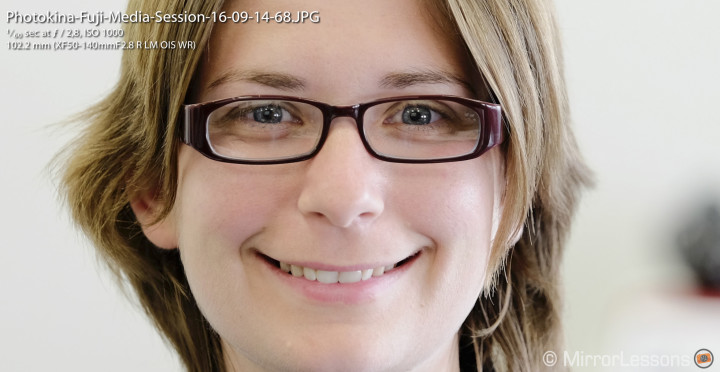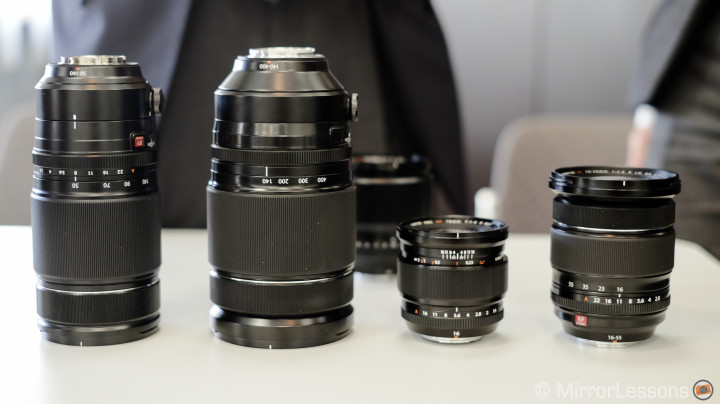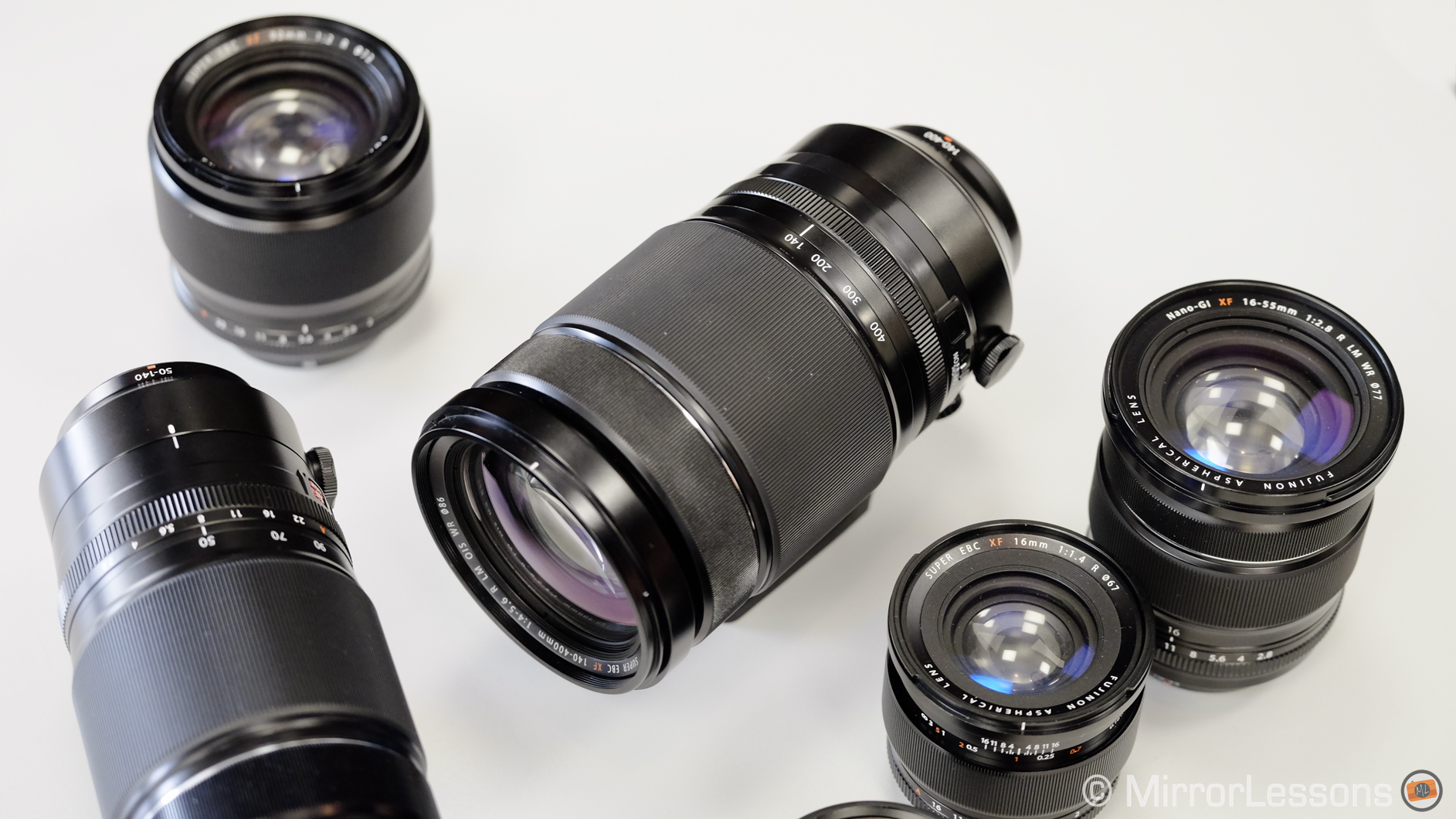Fujifilm is taking an important step with the new lenses it recently announced, and with the lenses that will come in 2015. We are not talking about small and compact lenses but professional lenses with a complex design that can give you the best image quality while keeping size and weight as low as possible. I think that the presence of these lenses is certainly going to help the system take a big leap forward, but many users have also started to wonder whether one of the most interesting aspects of the CSC camera, portability, is at risk.
The XF 50-140mm F2.8 R LM OIS WR
The 50-140mm is Fujifilm biggest zoom lens for the X system to be released. It is heavy but does not seem to unbalance the X-T1 too much. Of course holding it for a few minutes is one thing, holding it for an entire day is another. I think it is one of those lenses you would prefer to use with the dedicated battery grip anyway.  The image quality of this new telephoto lens seems quite spectacular. The sharpness is great at f/2.8, with that aperture being the main reason you would want a lens like this. The rendering looks appears to be the best of what Fujifilm has to offer. It will need further and more in-depth testing before I can say anything more, but my first impressions of the 50-140mm are very positive.
The image quality of this new telephoto lens seems quite spectacular. The sharpness is great at f/2.8, with that aperture being the main reason you would want a lens like this. The rendering looks appears to be the best of what Fujifilm has to offer. It will need further and more in-depth testing before I can say anything more, but my first impressions of the 50-140mm are very positive.




It isn’t small and it isn’t light compared to the other Fuji zoom lenses but let’s not forget the obvious: it is a constant aperture telephoto zoom that gives you an equivalent focal length of 76-213mm and we all know that this kind of lens on a DSLR system is much heavier and bigger. Also, if you want great performance, there are some “physical” requirements that cannot be ignored. The lens I tested was a pre-production model so I prefer not to conclude anything yet regarding autofocus and stabilisation. The AF seemed good to me but it wasn’t always perfect as it had some “back and forth” behaviour. It was very silent though. With the internal stabilisation, I got very sharp images at 1/60s or 1/125s but also some blurred results. But again it is hard to conclude anything with only a few shots and a pre-production model.
The new XF 56mm f/1.2 APD
I briefly tried the new XF 56mm f/1.2 APD but I can’t really draw any conclusions with the few pictures I took. I will need to compare it to the original 56mm in situations where you can clearly see a difference. Fujifilm representatives did show us a couple of examples taken by X-Photographers Patrick Laroque and Nathan Elson and it is true that the bokeh and out-of-focus area look nicer. 

To me this lens appears to be a way of bringing a full-frame look to the X system. Speaking with the Fujifilm Japan representatives, they confirmed that the lens has been in the pipeline for a long time, and it wasn’t added to the roadmap because photographers specifically requested it.
New Fujfilm lenses for 2015: the roadmap increases
We were also able to see some mock-ups of the lenses that will be available in 2015.

There is the 140-400mm f/4.5-5.6 that looks very interesting and gives you an equivalent focal length of 210-600mm. I was actually surprised by its size: it isn’t much bigger in length than the 50-140mm but it is larger in diameter. It will become the biggest Fuji lens next year but considering the focal lengths it covers and the relatively good aperture, it is quite impressive.

The 16mm f/1.4 is also in development and looks similar to the 23mm 1.4 in terms of size. But the most surprising lens is the 90mm f/2, which is a really “fat” lens in comparison to the other prime lenses. Finally, there is the 16-55mm f/2.8 which is of course bigger than the 18-55mm but still a more than reasonable size. It is not yet clear if Fuji will put OIS technology in it or not. Let’s hope they do because it is very important on a lens like this.
Conclusion
Fujfilm is aiming to have a complete lens line-up that can satisfy both enthusiasts and professional photographers, and the most recent lens releases and announcements clearly target the latter. Better image quality inevitably means a bigger size and more weight but it is also true that the system still remains smaller than an equivalent DSLR system. I also think that having these professional zoom lenses is a positive thing as they will give more options to professional photographers, resulting in more feeling tempted to switch. Let’s not forget that if you want compactness, the way to go is primes and that works for every system. And with the quality of Fuji lenses, you have a heck of a lot of choice.









